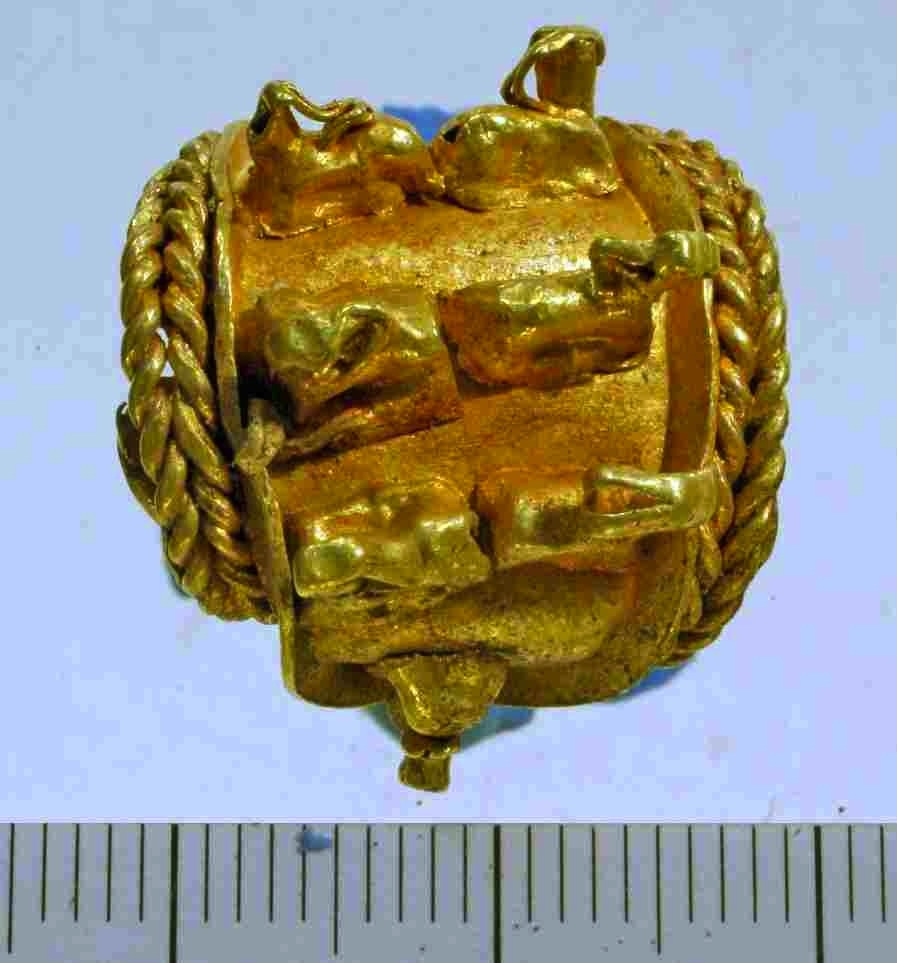No Genie, But Golden Jewelry Found in Ancient Bottle

A jug wrapped in textiles and hidden in a northern Israel home more than 3,000 years ago turns out to hold a literal treasure trove of gold and silver jewelry, archaeologists announced Monday (May 20).
The jug, excavated from a house in Tel Megiddo in the Jezreel Valley in northern Israel, is an unusual place to find jewelry, according to Tel Aviv University archaeologists. Even the jewelry itself is odd: Among the pieces is a beautiful golden earring decorated with ibexes, or wild goats.
"For unique items, we work to find parallels to help place the items in their correct cultural and chronological settings," the researchers said in a joint statement, "but in this case, we still haven't found anything."
Archaeologists first found the ceramic jug in 2010. It dates back to about 1100 B.C. and likely belonged to a Canaanite woman who lived in the house. Canaan was a historical region made up of what is today Israel, Palestine, Lebanon and parts of Syria and Jordan. Tel Megiddo was an important city-state in this region until the early 10th century B.C.
After washing the dirt out of the vessel, researchers were surprised to find beads, earrings and a ring. No one knows why the jewelry was stored in the jug. [Sinister Sparkle: 13 Mysterious Gemstones]
"It's clear that people tried to hide the collection, and for some reason they were unable to come back to pick it up," Tel Aviv University archaeologist Israel Finkelstein said in a statement.
The collection includes several moon-shaped earrings, known to be popular in Canaan in this era. Other pieces, especially some of the gold items and beads made from carnelian, may hail from Egypt, the researchers said. Carnelian and gold were popular in Egyptian jewelry, they said.
Get the world’s most fascinating discoveries delivered straight to your inbox.
Egypt ruled Tel Megiddo for a period ending in the 12th century B.C., just before the date of the jewelry. The pieces may have been left behind when the Egyptians left the area, or the Canaanites might have been influenced by Egyptian style and mimicked their baubles.
The researchers are planning to analyze the textiles found around the jug as well as the jewelry itself to get more clues about its origin. If the golden goat earring is a mixture of gold and silver, for example, it may be local craftsmanship. If it's pure gold, it's more likely from Egypt, a nation with lots of gold but little silver.
You can follow LiveScience senior writer Stephanie Pappas on Twitter @sipappas. Follow LiveScience for the latest in science news and discoveries on Twitter @livescience and on Facebook.

Stephanie Pappas is a contributing writer for Live Science, covering topics ranging from geoscience to archaeology to the human brain and behavior. She was previously a senior writer for Live Science but is now a freelancer based in Denver, Colorado, and regularly contributes to Scientific American and The Monitor, the monthly magazine of the American Psychological Association. Stephanie received a bachelor's degree in psychology from the University of South Carolina and a graduate certificate in science communication from the University of California, Santa Cruz.
